Formidable Forms comes with field types in the free version and additional field types in the Pro version. This page will help you learn about each of the field types offered by Formidable.
Free Fields

Single Line Text
Allows user to enter a single line of text.

Read more about single line text fields.
Paragraph Text
Provides ample space for user to enter multiple lines of text.

Read more about paragraph text fields.
Checkboxes
Allows user to select any number of options by clicking checkboxes.

Read more about checkbox field.
Radio Buttons
Prevents the user from selecting more than one option. This field type is often used for yes or no questions.

Read more about radio button fields.
Dropdown
Allows user to select a response from a drop-down menu.

Read more about dropdown fields.
Email Address
Behaves just like a text field, but also checks the text to make sure it matches the pattern expected of a real email address (ex. a user mistakenly enters 'jordansmithexample.com' as their address -- this is missing the '@' and would show an error). In the form settings, you have the option to send an automated response to this email address.

Read more about email address fields.
Website/URL
Verifies that the value entered is a valid URL. It also allows user to reference images that are already uploaded or located elsewhere online. This field can contain URL validation and a thumbnail image for the specified image.

Read more about Website/URL fields.
Number
Only allows numeric values to be entered (e.g. 394 or 2328.33).

Read more about number fields.
Name
Allow users to input their first, middle, and last name.

Read more about name fields.
Phone Number
Checks the value entered for a valid phone number, social security number, zip code, etc.

Read more about phone number fields.
HTML
Provides you with an area to add blocks of text, images, or other HTML that will be displayed in your form, but will not be saved with each entry.

Read more about HTML fields.
Hidden Field
May be used for any values you don't want your users to see or edit. This field is most useful in conjunction with Dynamic Default Values which allow you to populate the hidden field without the user ever seeing it. You can use any of the codes listed under the Dynamic Default Values section located on the right side of the page when you are editing a form. Read more about hidden fields.
User ID
If a user is logged in when they submit a form, their user ID will be automatically saved to this field, which allows users to return and edit their entries. This field also allow you to display their profile information (name, email, login, etc.) in forms and custom displays. This field will be added automatically if you choose to limit the form to one entry per user or allow users to edit previous responses.

Read more about user ID fields.
Captcha
Protect your site from unwanted spam by using a captcha field. Choose from different CAPTCHA built-in integrations: Google reCAPTCHA, hCaptcha, and Cloudflare Turnstile.

Read more about the Captcha field.
Payment
Collect payment from users using a credit card field.

Read more about the payment field.
Submit
Allow users to send their data by clicking the submit button.

Read more about the submit field.
Advanced Fields
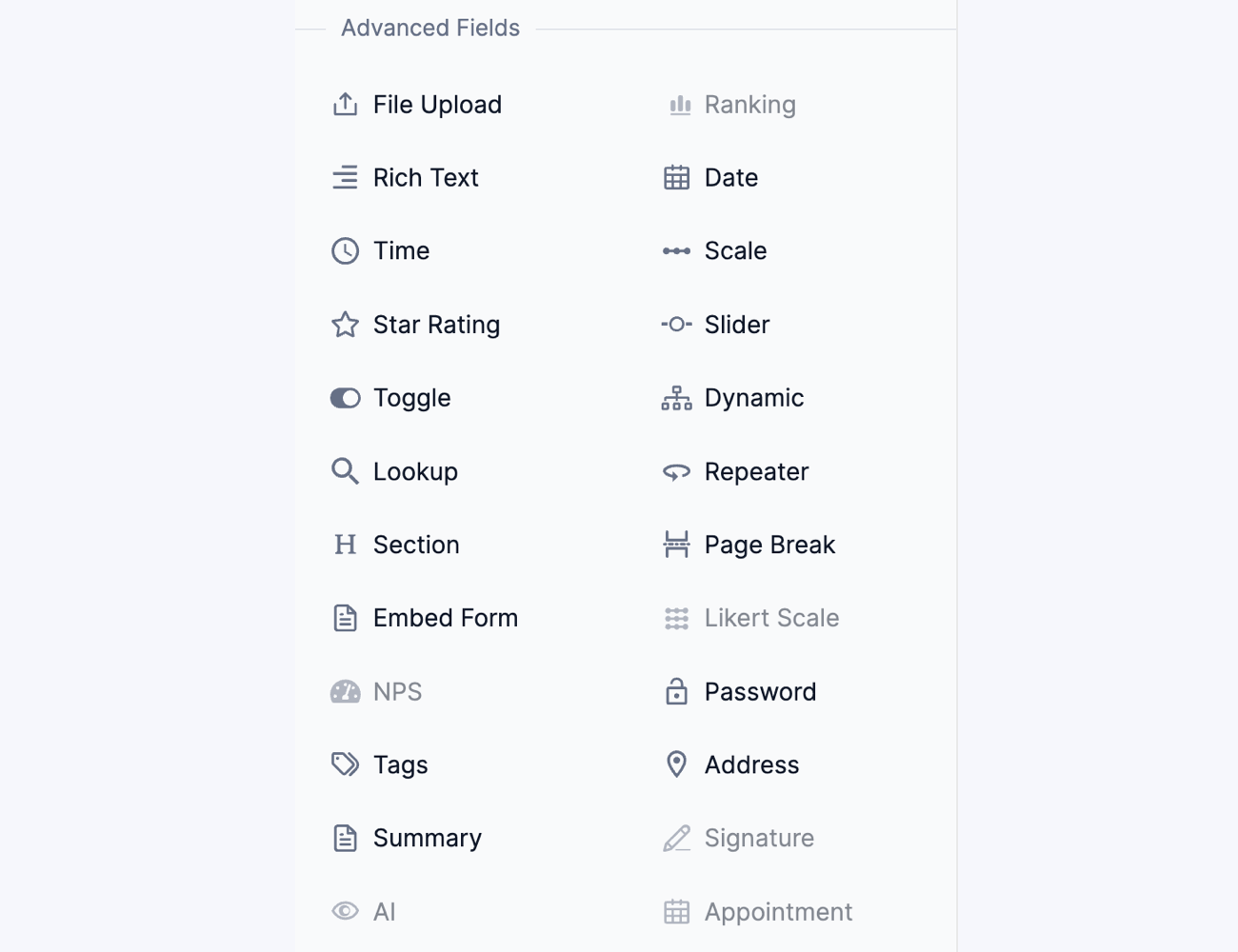
File Upload
Allows user to upload any file types supported by your WordPress installation. The maximum file size is set in your php.ini on your server and the files are stored in your WordPress Media Library in the location specified in your WordPress settings.
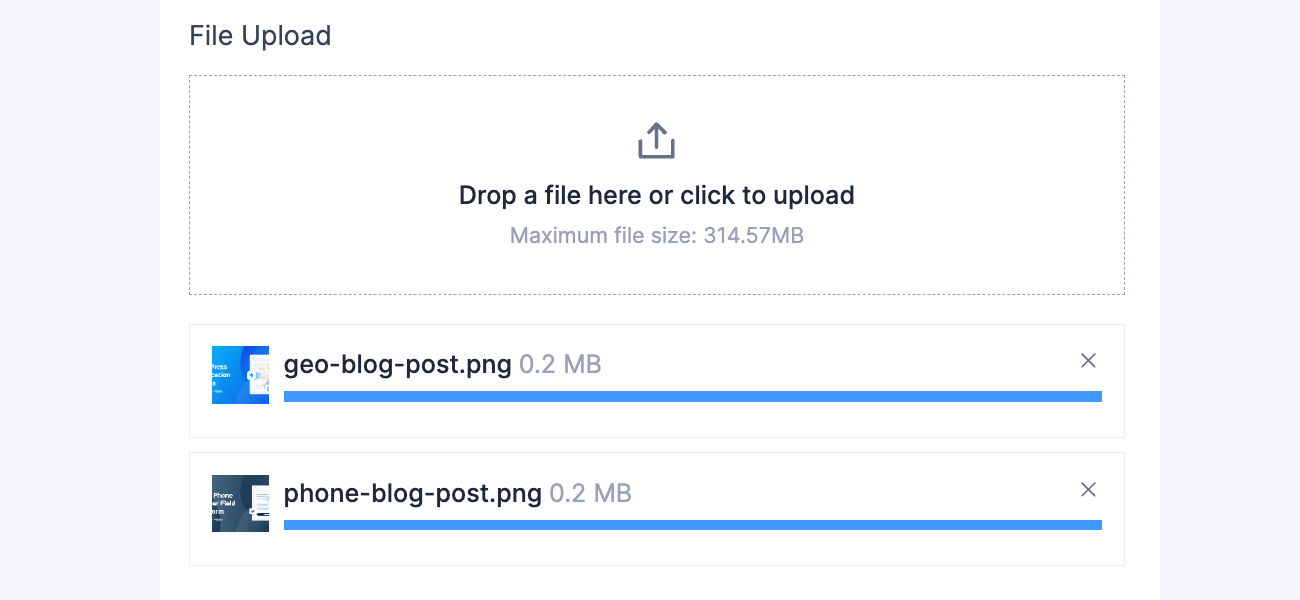
Read more about file upload fields.
Ranking
Show the ranking options either as plain text or with images. Note that this feature requires the Survey add-on.
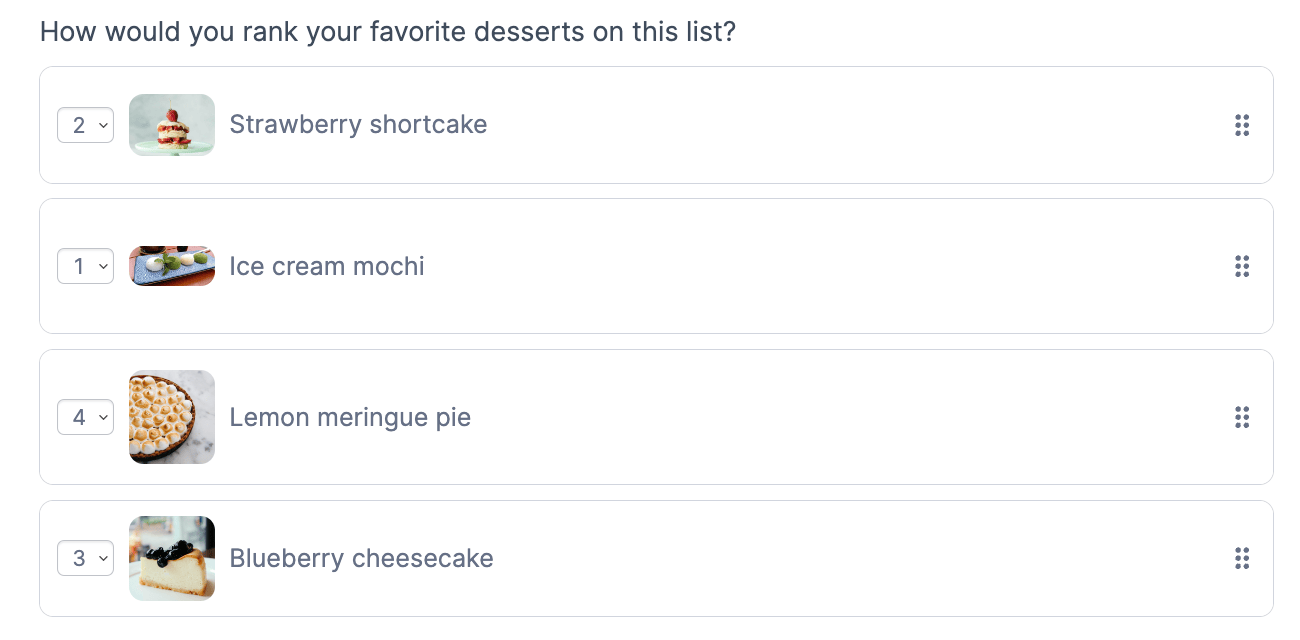
Read more about ranking survey fields.
Rich Text
Provides user with more control over text and paragraph styling without using HTML.
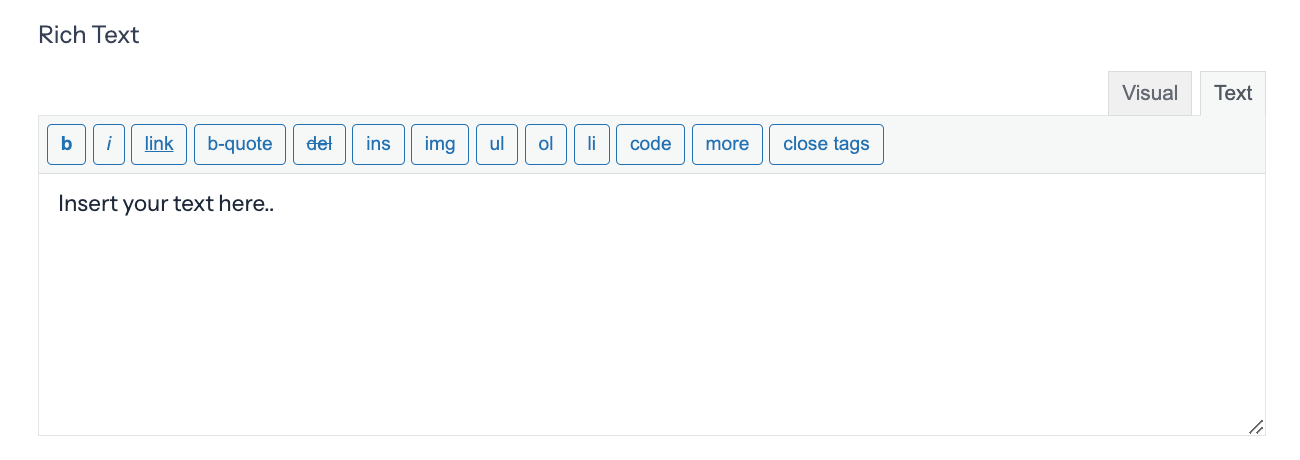
Read more about rich text fields.
Date
Allows user to select a date from a pop-up calendar. Select your calendar styling from the Styles page.
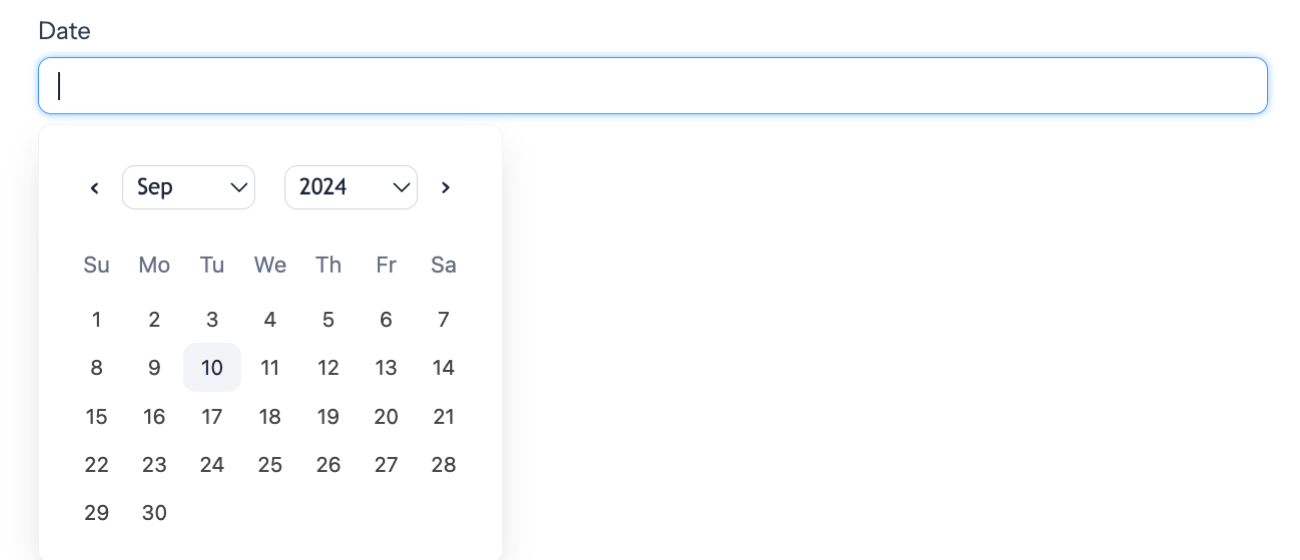
Read more about date fields.
Time
Allows user to select a time from a drop-down list.

Read more about time fields.
Scale
Provides radio buttons with options 1-10.

Read more about scale fields.
Star Rating
Show clickable stars to select a value.

Read more about star rating fields.
Slider
Select a number by sliding a handle along a bar.
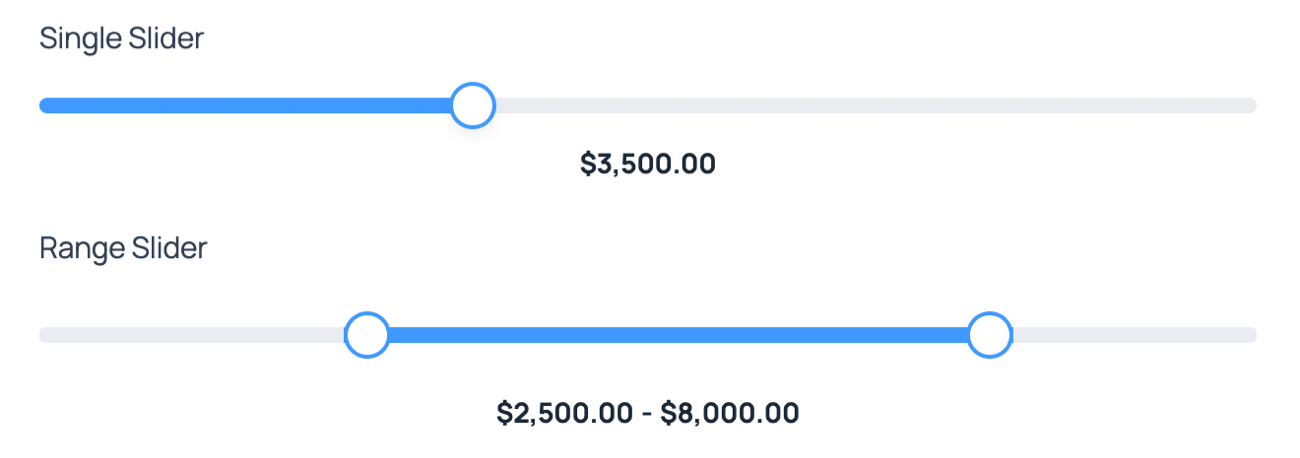
Read more about number slider fields.
Toggle
Enable users to switch a setting on or off. By moving the toggle, users can easily enable or disable the field.

Read more about toggle fields.
Dynamic Field
Provides you with the tools to create dynamic drop-downs, check boxes, radio buttons, or a list, as well as link multiple forms. This is an incredibly powerful, but complex field. To learn more on using this field type, see the documentation on Dynamic relationship fields.
Lookup
Use to create dropdowns and radio buttons that are dynamically populated with submitted entries. See the documentation on Lookup fields.
Repeater
Allows users to repeat a group of fields any number of times.

Read more about repeater fields.
Section
May be used to add a basic section heading, a collapsible section, or a repeatable section.
- Heading: This will allow you to give your section a title.
- Collapsible: Any field that you drag into this field will be collapsible under the heading.
Read more about section heading fields.
Page Break
Enables you to make your form multi-paged by adding page breaks.

Read more about page break fields.
Embed Form
This field allows you to embed a form (Form A) into another form (Form B). Form A may only be embedded once in Form B, but it may be embedded in any number of forms. Read more about embedded form fields.
Likert Scale
Allows users to select an option from a defined scale. Note that this feature requires the Survey add-on.

Read more about Likert Scale fields.
NPS
The Net Promoter Score (NPS) field enables users to choose a rating on a numerical scale. Note that this feature requires the Survey add-on.

Read more about Net Promoter Score (NPS) fields.
Password
A single line text field that hashes out the characters entered for security. Note: entered text is saved as plain text (not hashed) in the database unless you have the Registration Add-on installed. With the Registration Add-on, password values are not saved to the Formidable database.

Read more about password fields.
Tags
May be used to add a comma-separated list of tags or categories. If you are creating WordPress posts with your form, you can select this field to be used with any category/taxonomy.

Read more about the Tag field.
Address
Provides all the fields needed for the user to input a mailing address.

Read more about address fields.
Summary
Add a summary field to a multi-page form to review your entries before submission. This summary will show the information from any previous pages but will not include fields from the current page or any later pages.
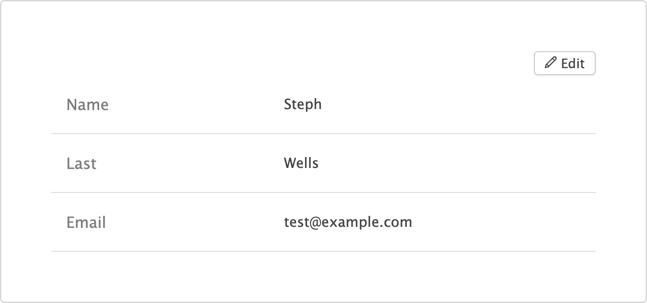
Read more about summary fields.
Signature
Allows the user to write their signature with the mouse/trackpad or type it. The Signature Add-on is required to use this field type.
Read more about Signature fields.
AI
Use the AI field to show AI-generated responses. Include these responses in the form before submission, email notification, confirmation message, or a View.

Read more about Form AI fields.
Appointment
Create an appointment booking form with the Simply Schedule Appointments built-in integration.
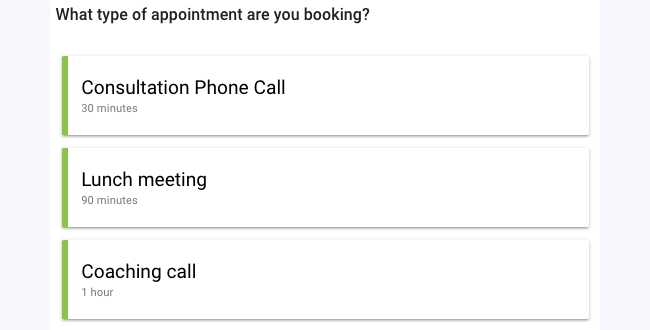
Read more about appointment fields.
Pricing

Allows you to integrate eCommerce features into your forms. This category consists of the following fields:
- Product: Set individual prices for each product.
- Quantity: Select the desired quantity for each item.
- Total: Easily calculate total costs within the form.
Read more about pricing fields.
Miscellaneous
The following are fields that are not visible on your form, but they are always present in your forms.
- Entry Key: An entry key will be given to each entry and can be found by going into Form Entries and clicking 'View' for any entry. This key is unique for each entry and is randomly generated.
- Created At: Stores the date, time, and user ID of the original entry creation.
- Last Updated: Stores the date, time, and user ID of the most recent update.
- IP Address: Stores the IP Address of the user who submitted the entry.
- User-Agent (Browser/OS): Stores the Browser and Operating System of the user who submitted the entry.
- Referrer: Stores the URL of the page where the form was submitted.
